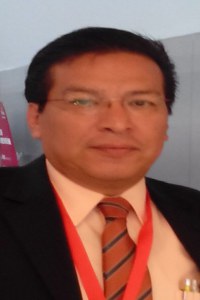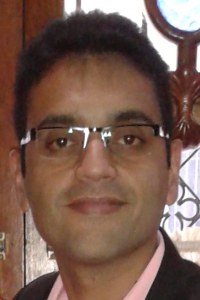

Arezes, Pedro M.
Departamento de Produção e Sistemas / Universidade do Minho / Campus de Azurém / 4800-058 Guimarães , Portugal 351 253 510354 / parezes@dps.uminho.pt
Macedo, M. Cristina
Departamento de Produção e Sistemas / Universidade do Minho / Campus de Azurém / 4800-058 Guimarães, Portugalmacedocristina@hotmail.com
ABSTRACT
Despite the legislation concerning occupational noise exposure, exposure to recreational, or leisure, noise, as for example the shooting with fire guns, has no legal frame. The main goals of this work are to characterize the shooting sites users profile and to assess the real efficiency of the Hearing Protection Devices (HPD) used in such sites. Amongst the main obtained results, it is possible to emphasize that all shooting sites users are exposed to significantly high peak levels and that the most frequent carried out measure, to protect users from noise exposure, is the adoption of personal protection. The tested HPD, both active and passive, are generally suitable for protecting people from exposure to high peak levels.
Keywords
Impulsive, noise, hearing protection, shooting, fire guns
INTRODUCTION
In Portugal, occupational noise exposure has been legally framed since 1992 by the transposition of the European Directive 86/188/CEE of 16th May, which occurs through the publication of the Decree-Law 72/92 and the Decree 9/92 [1][2], both from 28th April. This legislation establishes, among other issues, the action level and the threshold limit value for the daily noise exposure and defines the technical measures and organizational strategies as priority actions to minimize noise emission and its propagation. Accordingly, HPD should be considered as an ultimate solution, as far as to workers’ protection concerns. Since then, HPD use, although considered as temporary, emerges as a very frequent solution in occupational settings.
According to Portuguese legislation, whenever the threshold limit value for daily noise exposure or the maximum peak level, 90 dB(A) and 140 dB respectively, are exceeded, HPD use should be compulsory. If exposure exceeds the action level for daily exposure (85 dB(A)) HPD should be available at workplaces but its use is optional.
High impulsive noise exposure is very frequent in occupational environments. However the increasing exposure from recreational, or leisure, activities has originated
an increasing attention from researchers working in this domain [3].
Unlike occupational environment exposure, recreational noise exposure has no legal framework and consequently has no inspection or control entities, at least formally. Therefore, when it happens, the protection of exposed individuals is generally done by themselves. This means that noise protection is frequently done through the use of HPD. However, the HPD should be adequately used in order to obtain maximum efficiency for noise attenuation in real conditions [4].
The exposure to continuous high sound pressure levels, generally found in occupational settings, and the respective effects have been widely studied [5]. Presently, and as result of many of these studies, it is consensually accepted the dimension of noise exposure effects, including the effects of the exposure to impulsive noise.
It is also consensual that the most severe hearing losses are originated by the exposure to high impulsive sound pressure levels [6]. Impulsive noise is a noise in which the sound pressure level has a very fast increase followed by a very fast decrease, which is generally called peak level and it is defined as the sound pressure level that has a duration less than 1 second and it repeats in a period greater than 1 second. The peak sound pressure levels could reach nearly 170 dB (peak). This level can exceed the threshold of pain and cause damage to the tympanic membrane. Impulsive noise exposure risk derives, essentially, from the fact that it happens in a very short period and has a considerable energy in the entire human hearing frequency spectrum (20-20000 Hz).
The frequent use of fire guns (pistols, gun-machines, rifles and hunting-guns) originates exposures to high impulsive sound pressure levels and consequently a serious risk of hearing loss.
In Portugal, most of the users are military personnel, police agents and sport shooting users. Although in Portugal it is not well known the total number of persons that have been exposed in such environments, as well as the consequences of such exposure, in some countries these data are more complete and well documented. In Finland, for example, people exposed to high impulsive sound pressure levels, either in occupational or non-occupational settings, constitute the great majority of compensation cases due to noise induced hearing loss [7].
Due to the lack of information about the use of HPD amongst the fire guns shooters, as well as the unknown real efficiency of such devices, this work intends to be an important contribution to the study and characterisation of the use of HPD in the mentioned environments. For this purpose several noise measurements were carried out and a HPD’s real efficiency assessment technique, similar to MIRE (Microphone In Real Ear), was applied.
This study was developed in the Ergonomics Laboratory of University of Minho and has been carried out in several locations, namely:
- Indoor shooting site of Polícia Judiciária’s Building (PJ) (Criminal Police) in Porto (figure 1).

Figure 1 – Indoor shooting site of PJ in Porto.
- Outdoor shooting sites of 25 m (closed type – figure 2) and 300m (open type – figure 3) in Braga, both belonging to the Portuguese Army, Cavalry Regiment no. 6.

Figure 2 – Outdoor shooting site of 25 m in Braga.

Figure 3 – Outdoor shooting site of 300m in Braga
- Outdoor shooting site (open type) for sport shooting.
METHODOLOGY
In this study, three different techniques were applied, namely:
- Sound pressure levels measurement and consequent calculation of the personal daily exposure levels.
- Questionnaire administration.
- HPD real efficiency assessment using a technique similar to MIRE.
The accurate definition of the noise levels shooting sites users are exposed to is an important point of this work. Thus, it was analysed the personal daily exposure level and maximum peak level for each sample’s subject.
As it is intended to analyse only exposure that may potentially originate health problems, namely hearing loss, were only considered users having daily personal exposure greater than the action level defined in Portuguese legislation. In order to characterize the sound pressure levels of each type of guns used, it was also carried out a spectral analysis of the most significant guns. This characterisation can constitute an important basis for the HPD selection.
Additionally, a questionnaire, regarding some aspects of the shooting practice and the use of HPD, was distributed by all the subjects’ sample.
Lastly, the third part of the methodology consisted in evaluating the efficiency of some HPD, using a technique of real efficiency assessment. The technique consisted in a modified version of the MIRE technique. Using this technique two different HPD were tested (a passive and an active one with external sound pressure level dependency).
Equipment
Both sound pressure levels and spectrum analysis were made using the following equipment:
- 1 sound level meter Bruel
Papers relacionados














